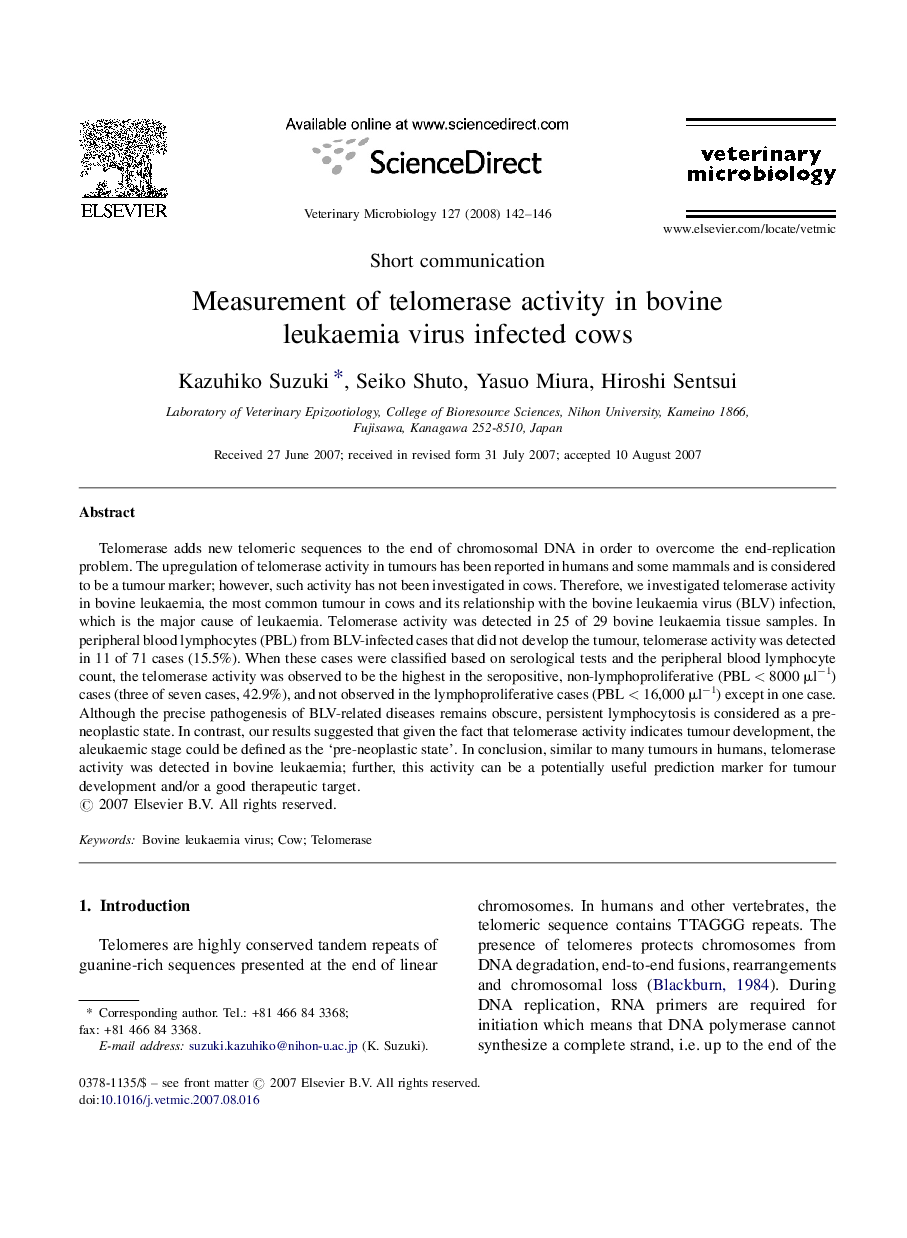| Article ID | Journal | Published Year | Pages | File Type |
|---|---|---|---|---|
| 2468902 | Veterinary Microbiology | 2008 | 5 Pages |
Telomerase adds new telomeric sequences to the end of chromosomal DNA in order to overcome the end-replication problem. The upregulation of telomerase activity in tumours has been reported in humans and some mammals and is considered to be a tumour marker; however, such activity has not been investigated in cows. Therefore, we investigated telomerase activity in bovine leukaemia, the most common tumour in cows and its relationship with the bovine leukaemia virus (BLV) infection, which is the major cause of leukaemia. Telomerase activity was detected in 25 of 29 bovine leukaemia tissue samples. In peripheral blood lymphocytes (PBL) from BLV-infected cases that did not develop the tumour, telomerase activity was detected in 11 of 71 cases (15.5%). When these cases were classified based on serological tests and the peripheral blood lymphocyte count, the telomerase activity was observed to be the highest in the seropositive, non-lymphoproliferative (PBL < 8000 μl−1) cases (three of seven cases, 42.9%), and not observed in the lymphoproliferative cases (PBL < 16,000 μl−1) except in one case. Although the precise pathogenesis of BLV-related diseases remains obscure, persistent lymphocytosis is considered as a pre-neoplastic state. In contrast, our results suggested that given the fact that telomerase activity indicates tumour development, the aleukaemic stage could be defined as the ‘pre-neoplastic state’. In conclusion, similar to many tumours in humans, telomerase activity was detected in bovine leukaemia; further, this activity can be a potentially useful prediction marker for tumour development and/or a good therapeutic target.
